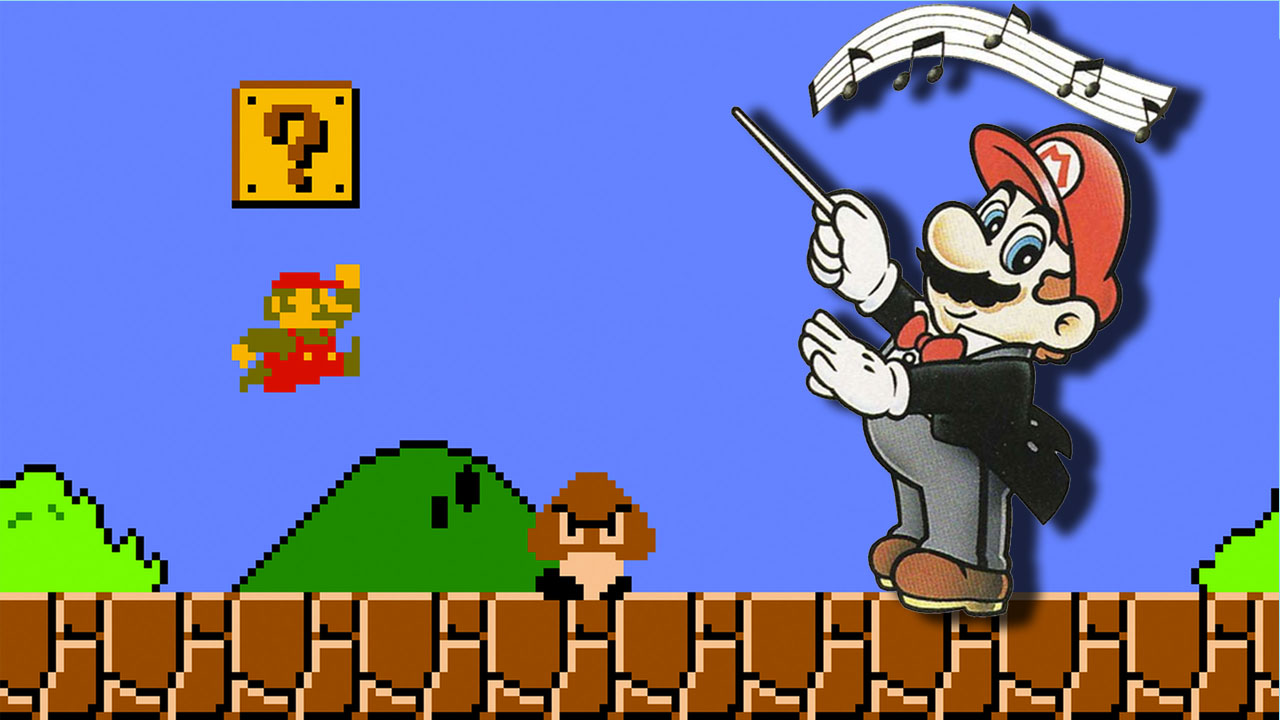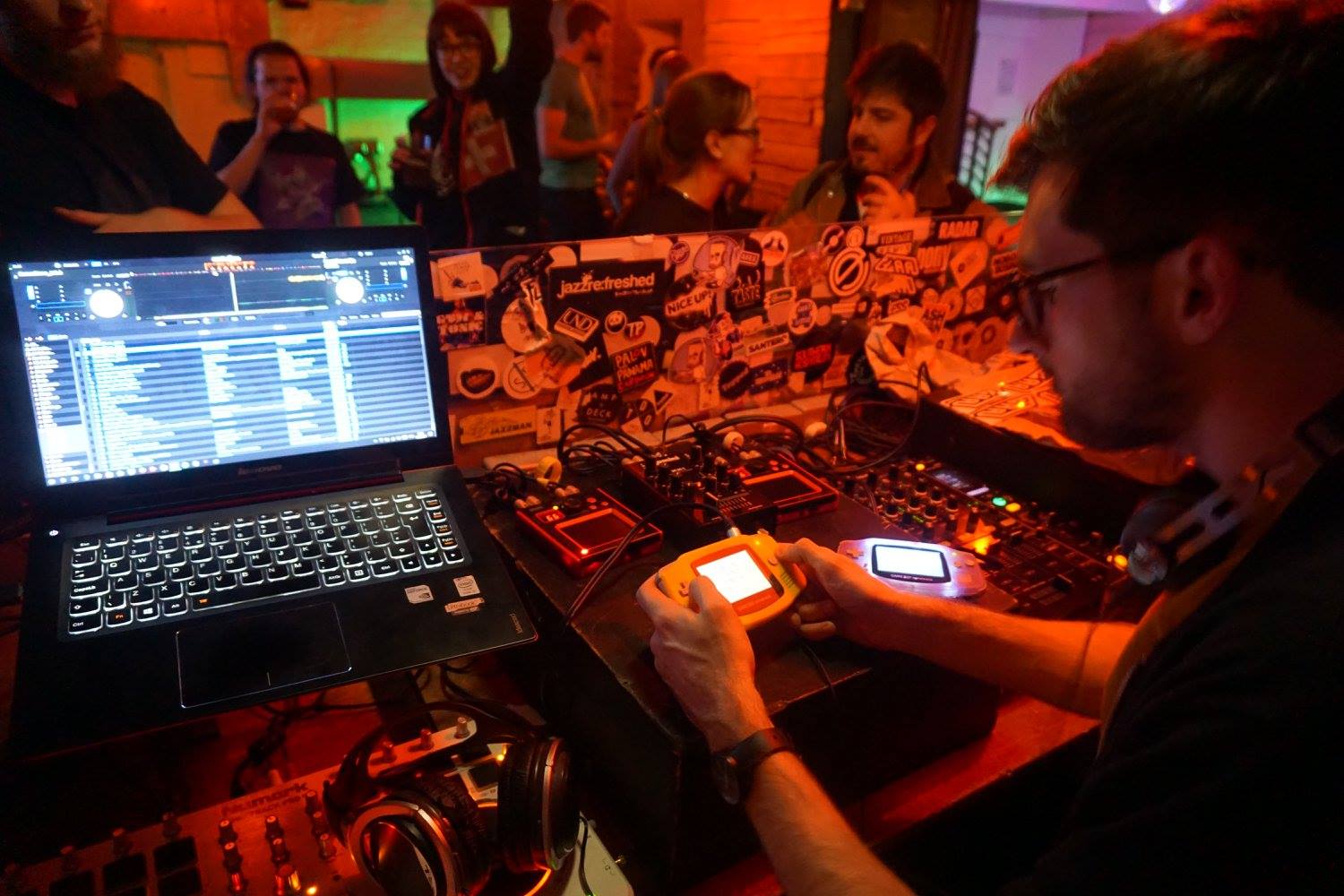From 8-bit to Chiptune: the music that changed gaming forever
After decades of gaming, what makes 8-bit music in particular so memorable?

Here’s a quick test for you. Try to hum the main theme to a few recent triple AAA games. How does the main theme to Grand Theft Auto V go? How about any of the Assassin’s Creed games, or Mass Effect? As a gamer, there’s a good chance you’ve played one of these multi-million sellers, but you’d be hard pressed to recall exactly how their tunes went.
Now try to do the same for a few popular games of the 8-bit generation. Nintendo’s Super Mario Bros or The Legend of Zelda. The Last Ninja or R-Type on the Commodore 64. Much easier right? It’s not that modern soundtracks are in any way bad – modern technology allows for sweeping, polyphonic scores to rival the Hollywood greats.
But can you imagine any inspiring someone to do this?
Nostalgia plays a big part – these games have had decades to embed themselves in our consciousness. But, modern games should, by this reasoning, benefit from proximity and their relative freshness in our minds.
So what makes 8-bit music in particular so memorable?
What is 8-bit music?
In the simplest of terms, 8-bit music is named so after the 8-bit sound processors that early games consoles like the Atari 2600 and Commodore 64 employed. Rather than being created by traditional instruments being recorded and imported as loops into the game, they were synthesised using the computer chips themselves.

As such, 8-bit music is characterised as much by its limitations as it is by its creativity. Each chip was only capable of creating a finite number of sounds, and so composers had to create specific tricks to make their tunes even work, let alone be memorable.
Get daily insight, inspiration and deals in your inbox
Sign up for breaking news, reviews, opinion, top tech deals, and more.
The number of simultaneous sounds that could be played back at once was limited dependant on each chip, too – the Commodore 64 could manage just three notes at once, for instance. Keep in mind that, as well as a soundtrack, this had to include sound effects – every time Mario hits a coin block or grabs a mushroom back in the 8-bit days, that’s a sound effect being played at the expense of some other audio element. It’s the speed with which these sounds alternate that allows our brains to fill in the polyphonic gaps.
Each chip was only capable of creating a finite number of sounds, and so composers had to create specific tricks to make their tunes even work, let alone be memorable
And, compared to the swelling ranks that make up modern development teams, early 8-bit titles were made by just a handful of developers, meaning that many 8-bit tunes were, amazingly, composed by programmers rather than dedicated musicians.
With the sonic odds stacked this way, it’s a wonder that 8-bit tunes didn’t become some kind of atonal mess.
Making an earworm
A killer drop? Three chords and the truth? Contrary to popular belief, there’s no formula to crafting a hit song. But there are a few rules that your typical pop hit adheres to that the 8-bit era’s technological limitations and thematic approach line up nicely with.
Firstly, repetition. Verse, chorus, verse chorus = top 10 hit. When you’ve got just a few kilobytes of storage space to play with, a repetitive sound track is actually a boon, keeping as much space as possible free for graphics and processing tasks.
Secondly, speed. An upbeat pop hit usually hovers around the 120 beats per minute mark. The fast-paced nature of many action-orientated 8-bit games (remember, this was mostly an era of games in which emotional depth or hard hitting stories, which would benefit from a more reflective soundtrack, played second fiddle to twitchy shooters and quick reaction times), meant that their soundtracks fell nicely into this window, if not faster. Mega Man II’s main theme, for instance, is an astoundingly fast 160bpm.
A repetitive sound track was actually a boon, keeping as much space as possible free for graphics and processing tasks
Thirdly, there’s key. The usually jolly key of C Major is the most popular key for pop hits, and while it’s not necessarily fitting for all games, it’s somewhat unsurprising to find that the Super Mario Bros. theme tune is within that key. Here it is transposed to C Minor:
It’s hard to imagine that being as well-loved as the original.
Lastly, there’s simplicity. Combined with the first rule on repetition, the limitations of the hardware meant that 8-bit composers had only simple melodies with which to better convey the magic of their individual games. From radio jingles to the ‘77 punk explosion, a catchy melody has been key to sticking in our memories, and no amount of choral choirs, sweeping strings or amplified guitar riffs can cover up an essential lack of tuneage.
Inspiring the future
The indie boom of recent years has seen a resurgence in retro-themed games, many with 8-bit twinges, not least because smaller dev teams suit the stripped-back approach of the era. From Hotline Miami to Broforce, the influence of the era, aesthetically and sonically, is clear.
But influence can take more subtle forms too. Jack Good, senior artist at Bossa Studios (the development house behind the hilarious Surgeon Simulator and forthcoming Worlds Adrift) finds inspiration while he works from the tunes of yesteryear.
8-bit just has such a unique and timeless sound
Jack Good, senior artist, Bossa Studios
“I find listening to songs from games I love gets me pumped about what I'm working on,” he says.
“A possible reason is just the tempo of 8-bit soundtracks is really nice to work to. As they tend to have to loop and don't have a sense of what the player is doing at any one moment, they usually have a similar energy level throughout and can't crescendo.
“It kind of keeps you on the edge of your seat, and I find this keeps me focused on whatever I’m working on.”
But there has been a more direct impact on the sonic direction of some Bossa titles, too.
“My friends Leo Chilcott and Murugan Thiruchelvam who made the Surgeon Simulator soundtrack together are both big fans of 8-bit music and those influences (as well as the Casualty theme tune!) definitely fed in to that soundtrack,” says Good.
“The soundtrack I always go back to is the Mega Drive/Genesis adventure Wonderboy in Monster World by Shinichi Sakamoto.
“The soundtrack, like the game, feels like an adventure. Each track perfectly suits the varied locations of Monster World, and they're just perfect. Amazing hooks and melodies, and the boss battles themes are on point.
“I think 8-bit just has such a unique and timeless sound, that also happens to be deeply ingrained in gaming culture,” says Good.
“Like pixel art, there will never be a replacement.”
Beyond the games console
The true measure of any culturally significant influencer or movement however is its ability to transcend its initial confines. 8-bit music (and its retro-sounding brethren) have inspired the Chiptune craze – an electro sub genre that tips its hat significantly to the 8-bit era.
Artists like Chipzel and Anamanaguchi, with the former composing the Super Hexagon soundtrack, and the latter literally using a NES cartridge as a limited edition item containing unreleased tracks. Then there’s indie electro darlings Crystal Castles, who (along with their 8-bit sound) can trace their name back to either a) She-Ra’s castle, or (more likely) b) the Atari game of the same name:
The sound has also inspired a fantastic underground club scene across the globe. Perhaps the most revered in the UK is Gamerdisco, which has existed in one form or another since 2010. Run by Nicholas Thurgood and Dave Fade, and travelling up and down the UK, it’s the UK’s number 1 gaming clubnight.
“Gamerdisco started 10 years ago when Dave and I had just both been dropped from our record labels and had a lot of time on our hands,” Thurgood remincies.
“He'd come over to mine and we'd grab a few beers and relive our youth somewhat by playing video games. We got really into it, it was nice to play all the old stuff again and realise it was just as good as when we were playing it as kids before music / girls / booze / discos took over from games in our lives. We thought one day, ‘hey we like this, let's do it in a bar and see if others do as well!’"
As it happened, they did, and a few months later Nintendo asked Gamerdisco to host the official launches for the Nintendo 3DS handheld.
“Chiptune certainly played a part – at the time Gamerdisco was the only place you could go to hear a DJ drop Super Mario over a sound system!”

With games consoles dotted around Gamerdisco venues, it’s an incredibly inclusive night out too, with a crowd of all ages and 60/40 male-to-female gender split – running contrary to the given perception that the gaming demographic is entirely male-dominated.
“We don't have games like Call of Duty or FIFA at our nights – I think games like that attract a mainly male crowd. But we have a lot of retro and indie titles and I think that stuff is way more inclusive, “ says Thurgood.
“I think chiptune is a really welcoming scene so no one is put off going to those sort of events. I'd say the gaming music and clubbing demographic is pretty much the same, it's people who want to go out and dance to decent tunes after all.”
But it’s not just a matter of preaching to the converted – Classic FM, the radio station famed for its laser-focus on symphonic greats like Beethoven and Handel, has recently introduced a music-of-gaming show. Though it focusses on the more symphonic modern soundtracks from the likes of Bethesda’s Elder Scrolls V: Skyrim, it’s an incredible validation of the audio work that began back in the 8-bit era.
Chiptune is a really welcoming scene
Nicholas Thurgood, Gamerdisco
“I love what Classic FM is doing”, says Thurgood.
“You hear a lot of themes from movies on there and it irks me a little that gaming isn't in the daytime shows as much. But having them play any at all shows how tastes are changing."
Could a show dedicated to gaming of the chiptune, rather than orchestral variety, prove popular?
“A show dedicated to game music will get a lot of love and hopefully turn people onto it and accept it more. I'm sure there are 8-bit and chiptune shows on odd radio stations if you are young and trendy you'll probably know about them,” says Thurgood.
That the “young and trendy” have embraced 8-bit speaks volumes of its lasting legacy. While we may dive into the latest 4K open world VR adventures with wild abandon, it seems we’ll be whistling the Mario theme tune long after the dust has settled on the current generation of games consoles.
- Welcome to TechRadar's Console Gaming Week, celebrating every single pixel of video gaming greatness. Head over to our hub for what you've missed so far.
Gerald is Editor-in-Chief of iMore.com. Previously he was the Executive Editor for TechRadar, taking care of the site's home cinema, gaming, smart home, entertainment and audio output. He loves gaming, but don't expect him to play with you unless your console is hooked up to a 4K HDR screen and a 7.1 surround system. Before TechRadar, Gerald was Editor of Gizmodo UK. He is also the author of 'Get Technology: Upgrade Your Future', published by Aurum Press.
